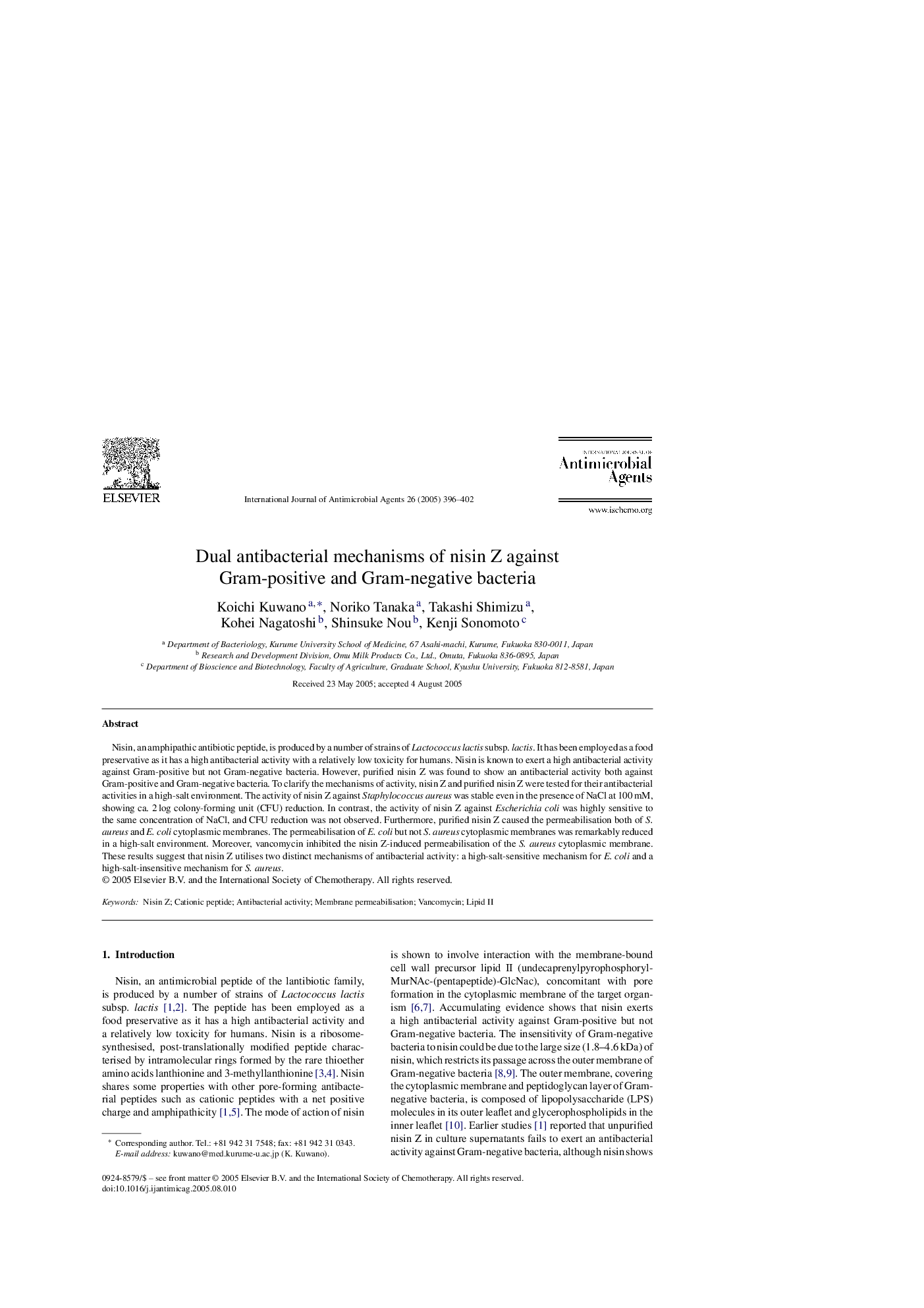| Article ID | Journal | Published Year | Pages | File Type |
|---|---|---|---|---|
| 10027714 | International Journal of Antimicrobial Agents | 2005 | 7 Pages |
Abstract
Nisin, an amphipathic antibiotic peptide, is produced by a number of strains of Lactococcus lactis subsp. lactis. It has been employed as a food preservative as it has a high antibacterial activity with a relatively low toxicity for humans. Nisin is known to exert a high antibacterial activity against Gram-positive but not Gram-negative bacteria. However, purified nisin Z was found to show an antibacterial activity both against Gram-positive and Gram-negative bacteria. To clarify the mechanisms of activity, nisin Z and purified nisin Z were tested for their antibacterial activities in a high-salt environment. The activity of nisin Z against Staphylococcus aureus was stable even in the presence of NaCl at 100Â mM, showing ca. 2Â log colony-forming unit (CFU) reduction. In contrast, the activity of nisin Z against Escherichia coli was highly sensitive to the same concentration of NaCl, and CFU reduction was not observed. Furthermore, purified nisin Z caused the permeabilisation both of S. aureus and E. coli cytoplasmic membranes. The permeabilisation of E. coli but not S. aureus cytoplasmic membranes was remarkably reduced in a high-salt environment. Moreover, vancomycin inhibited the nisin Z-induced permeabilisation of the S. aureus cytoplasmic membrane. These results suggest that nisin Z utilises two distinct mechanisms of antibacterial activity: a high-salt-sensitive mechanism for E. coli and a high-salt-insensitive mechanism for S. aureus.
Related Topics
Life Sciences
Immunology and Microbiology
Applied Microbiology and Biotechnology
Authors
Koichi Kuwano, Noriko Tanaka, Takashi Shimizu, Kohei Nagatoshi, Shinsuke Nou, Kenji Sonomoto,
